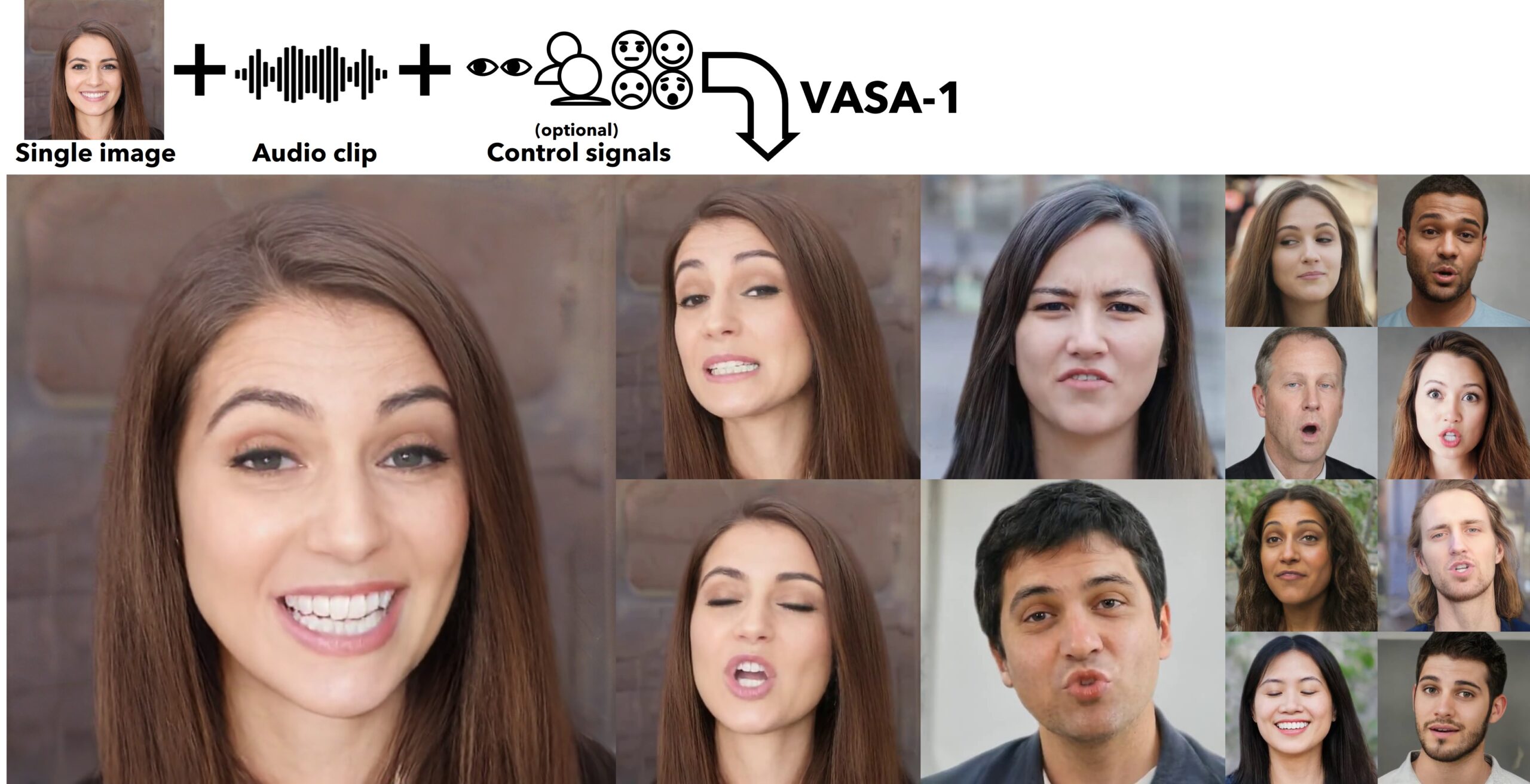Microsoft’s AI Can Create Shocking Deepfake Videos from Just ONE Photo! See How

April 20, 2024
In recent years, deepfake technology has emerged as a powerful tool for creating hyper-realistic videos that manipulate and superimpose faces onto different bodies or contexts. Microsoft, a global technology leader, has introduced an innovative AI model named Vasa-1, capable of generating remarkably realistic deepfake videos using just a single photo and an audio file. This groundbreaking project, developed by Microsoft Research Asia, raises both excitement and concerns about the potential implications of this advanced technology.
Understanding Vasa-1: The Visual Affective Skills Animator
Vasa-1, an acronym for Visual Affective Skills Animator, is an AI model that leverages machine learning algorithms to synchronize facial and head movements with lip-sync, resulting in highly convincing and natural-looking deepfake videos. By training on publicly available YouTube videos, Vasa-1 can produce videos of a person speaking or singing based solely on a snapshot of their face and an audio file. The ultimate goal of this project is to pave the way for real-time interactions with realistic avatars that emulate human conversational behaviors.
The Implications of Vasa-1: Blurring the Lines Between Real and Fake
While the capabilities of Vasa-1 are undeniably impressive, they also raise concerns about the potential misuse and ethical implications of deepfake technology. As Vasa-1 advances, it becomes increasingly difficult to discern whether an online video is genuine or artificially created. This poses a significant challenge in combating fake news and disinformation, as it becomes easier for malicious actors to spread misleading content.
How Vasa-1 Works: From Photo to Realistic Deepfake Video
The process of generating deepfake videos using Vasa-1 involves several steps. First, the AI model analyzes the facial features and expressions captured in the single photo. It then combines this information with the audio file to synchronize the movements of the virtual face with the spoken words or sounds. The result is a video that seamlessly blends facial expressiveness with the content being conveyed. To illustrate the capabilities of Vasa-1, let’s take a look at an example of a girl delivering a speech, where her facial expressions perfectly match the words she utters.
Notable Deepfake Applications: From Rap-Singing Mona Lisa to Realistic AI-Generated Videos
The potential applications of Vasa-1 and deepfake technology extend beyond serious applications like real-time avatar interactions. They also offer opportunities for entertainment and creativity. For instance, one amusing example involves the Mona Lisa coming to life and performing a rap-style rendition of “Paparazzi.” This demonstration showcases the extent to which AI can generate realistic videos purely based on digital prompts.

Vasa-1 and Similar Technologies: A Growing Trend
Microsoft’s Vasa-1 is not the only AI model pushing the boundaries of deepfake technology. In the past, Alibaba introduced Emo (Emote Portrait Alive), a technology similar in some respects. OpenAI’s Sora model has also demonstrated the remarkable ability to generate entirely AI-created realistic videos based solely on textual prompts. The advancements seen in Vasa-1 and its counterparts underline the need for enhanced systems capable of easily identifying AI-generated content to counteract the proliferation of fake news and misinformation.
The Technical Capabilities: Resolution, Frame Rate, and Real-Time Interactions
Vasa-1 boasts impressive technical capabilities that make it suitable for various applications. The AI model can generate videos at a resolution of 512×512 pixels, with up to 40 frames per second and minimal latency. This enables real-time interactions and video conferencing, broadening the potential use cases for such technology. While Vasa-1 remains a research project for now, with no immediate plans for code release, its technical prowess serves as a testament to the rapid progress being made in the field of AI-generated deepfake videos.
Ensuring Privacy and Addressing Concerns
As deepfake technology evolves, it becomes crucial to address concerns surrounding privacy and its potential consequences. Microsoft and other organizations developing similar technologies must prioritize the implementation of robust safeguards to prevent the misuse of deepfake videos. Stricter regulations and guidelines are necessary to ensure that this technology is used responsibly and ethically.
Unleashing the Potential of Deepfake Technology
The emergence of Microsoft’s Vasa-1 and other similar AI models signifies a significant milestone in the development of deepfake technology. While the implications of this technology are both exciting and concerning, it is crucial to strike a balance between innovation and responsible use. As deepfake technology continues to advance, it is imperative for society to remain vigilant and implement measures that safeguard against the potential misuse of these powerful tools.








